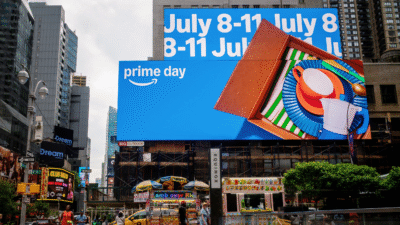Disney’s Streaming Bet is Paying Off. So What’s Next?
Has Bob Iger now done it? Has he restored the magic, the thing defeated activist agitator Carl Icahn said was missing?

Sign up for smart news, insights, and analysis on the biggest financial stories of the day.
Has Bob Iger now done it? Has he restored the magic, the thing defeated activist agitator Carl Icahn said was missing?
Maybe. In its fourth-quarter earnings call on Thursday, Disney reported a nine-figure profit in its direct-to-consumer streaming division — a wish upon a star that’s now finally come true. That powered a 6% share price boost, but can DTC truly offset declines throughout the rest of the Magic Kingdom?
A Whole New World?
Disney’s streaming division — comprising Disney+, Hulu, ESPN+, as well as various international versions — cruised to its second-straight quarter of profitability, pulling an operating income of $321 million, up from a $387 million loss a year ago. That’s an unmitigated win for Disney, and a fulfillment of promises made last year to reach profitability by the end of 2024.
Still, the global demand share of Disney’s original streaming content has declined in six straight quarters, according to industry research firm Parrot Analytics. Meanwhile, Disney still trails Netflix and Amazon in non-North American markets, where it hasn’t invested as heavily in local language content. That makes Disney, even in success, something of a runner-up. “No one is concerned about Disney+’s longterm viability as a standalone service, but Disney won’t be happy to place third or fourth among the streamers that survive long term,” Parrot Analytics wrote in a note Thursday. One helpful factor moving forward: more than half of new US Disney+ subscribers opted for the cheaper ad-supported tier, largely seen as more lucrative for streaming platforms.
And, of course, there’s still the albatross of its linear TV business and the murky future of its parks business:
- Disney’s linear TV unit saw a modest 6% decline in revenue, to $2.46 billion, but a massive 38% dip in profit, to $498 million.
- Meanwhile, revenue in its parks and experiences division grew just 1%, to $8.24 billion, as CFO Hugh Johnston warned of inflation-wary consumers pulling back on vacation spending. In October, Disney raised the prices of most ticket tiers to Disneyland; the company said last year it is investing $60 billion across its parks in the next decade.
Coming Soon: “There were some people who wanted to say that Iger brought the magic back,” Cowen & Company analyst Doug Creutz told The New York Times. “Well, let’s hold on a minute. There has actually not been a whole lot to get people excited.” Disney tried for excitement anyway, announcing guidance for 2025, 2026, and 2027 — an ultra-rare move for the company, and projecting a future past Iger’s planned 2026 retirement date. Unless, of course, he changes his mind again.











